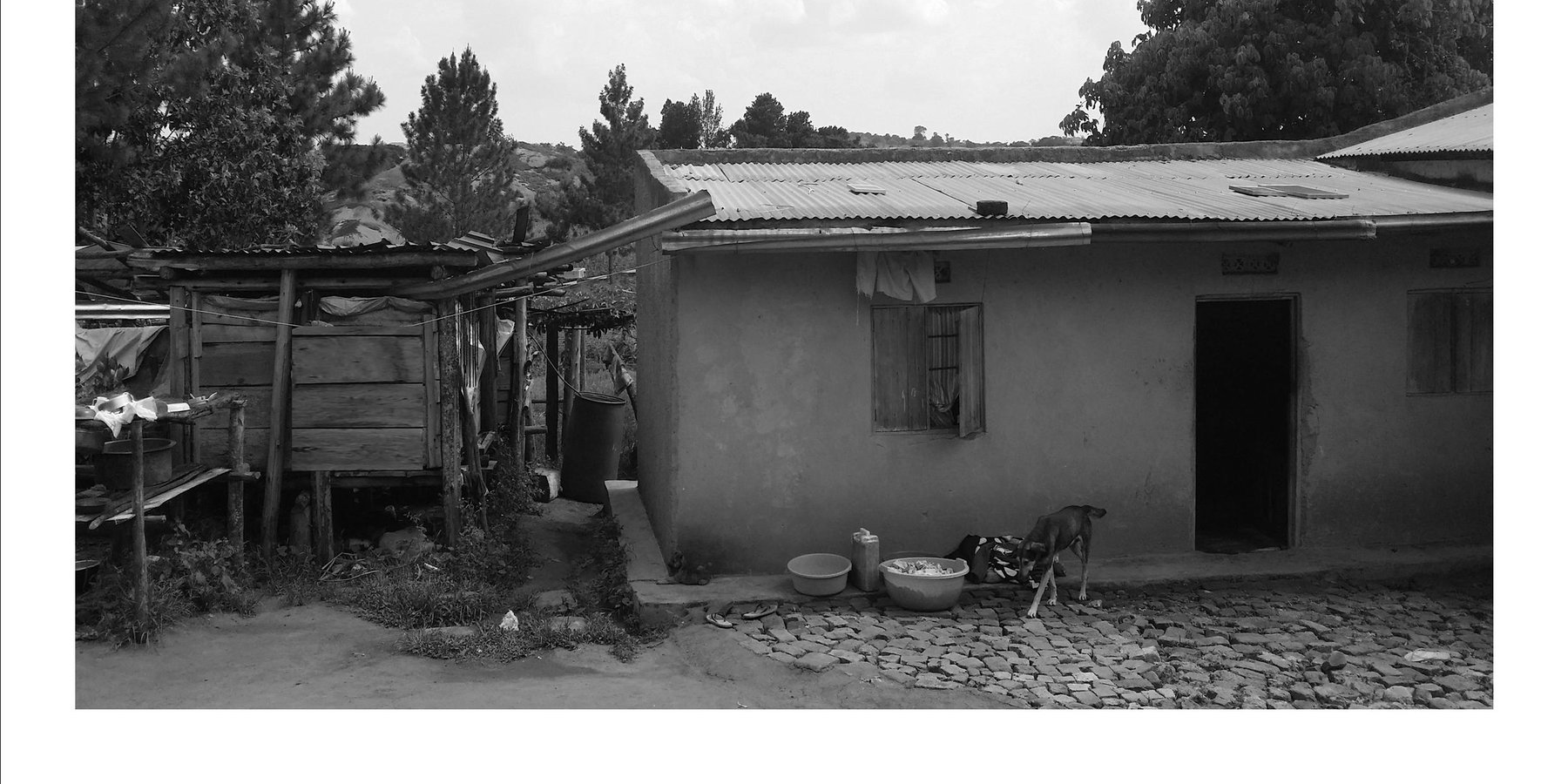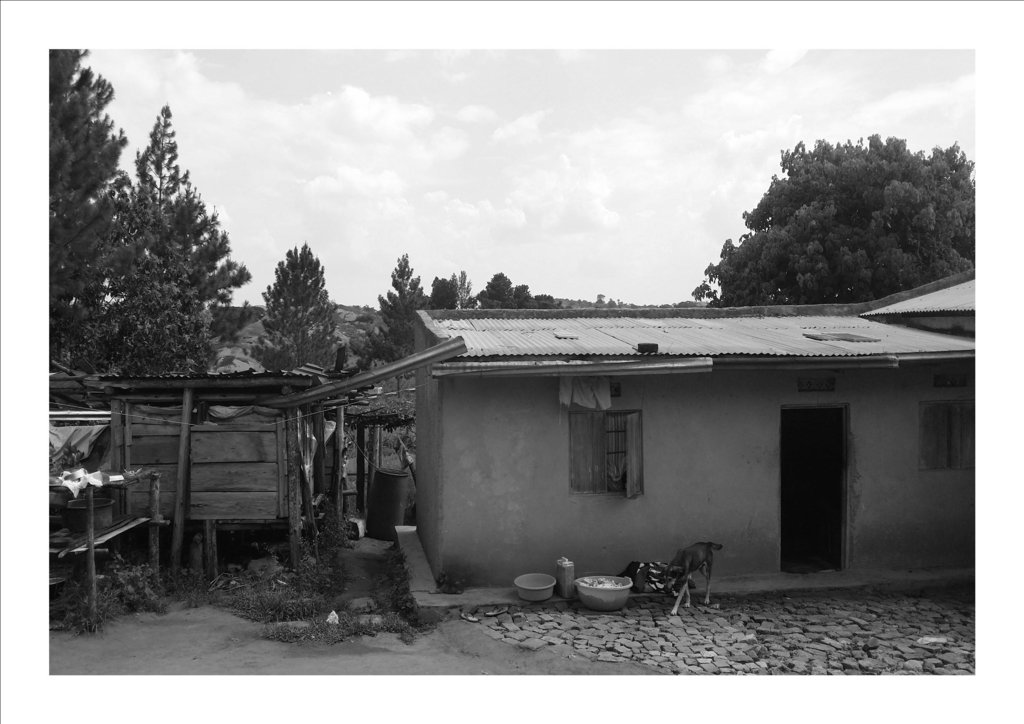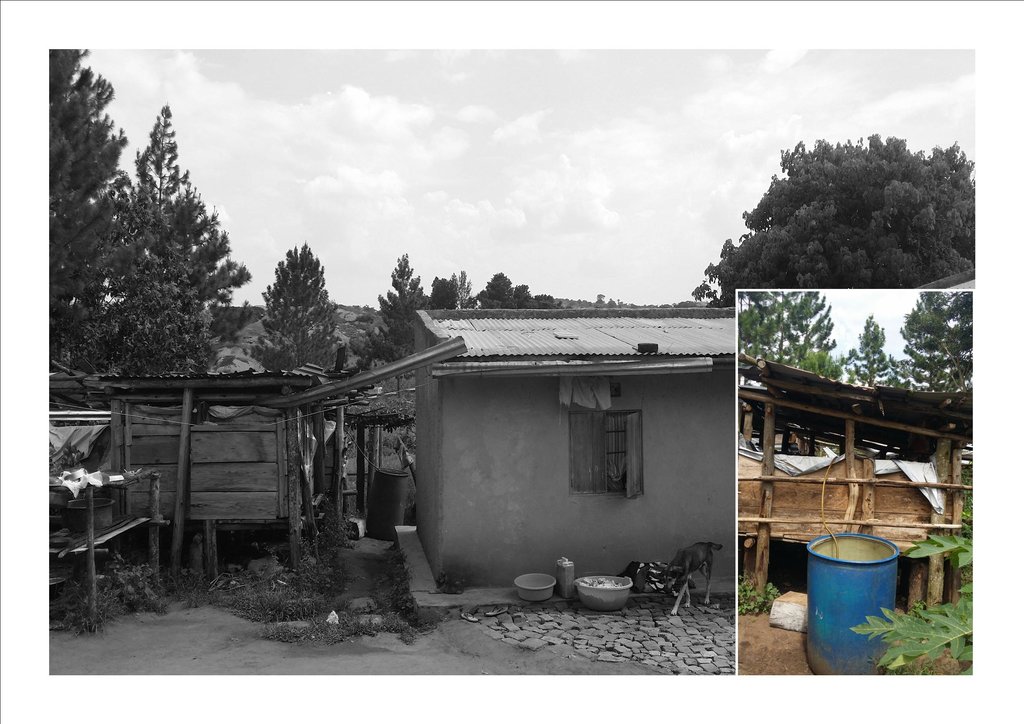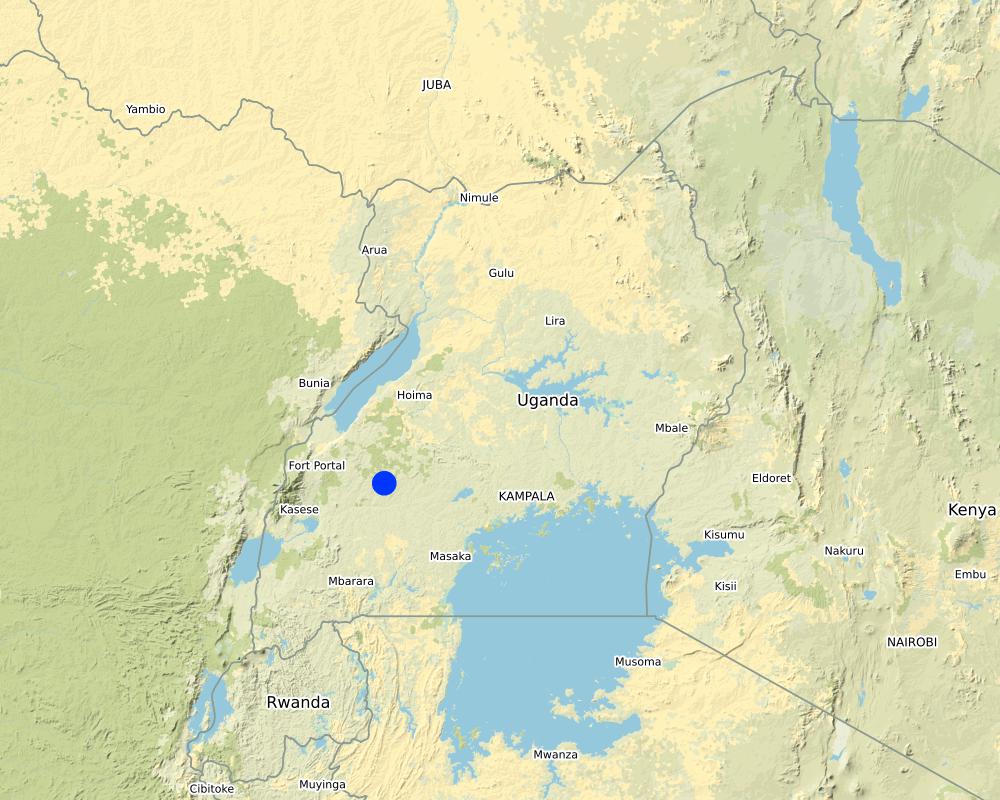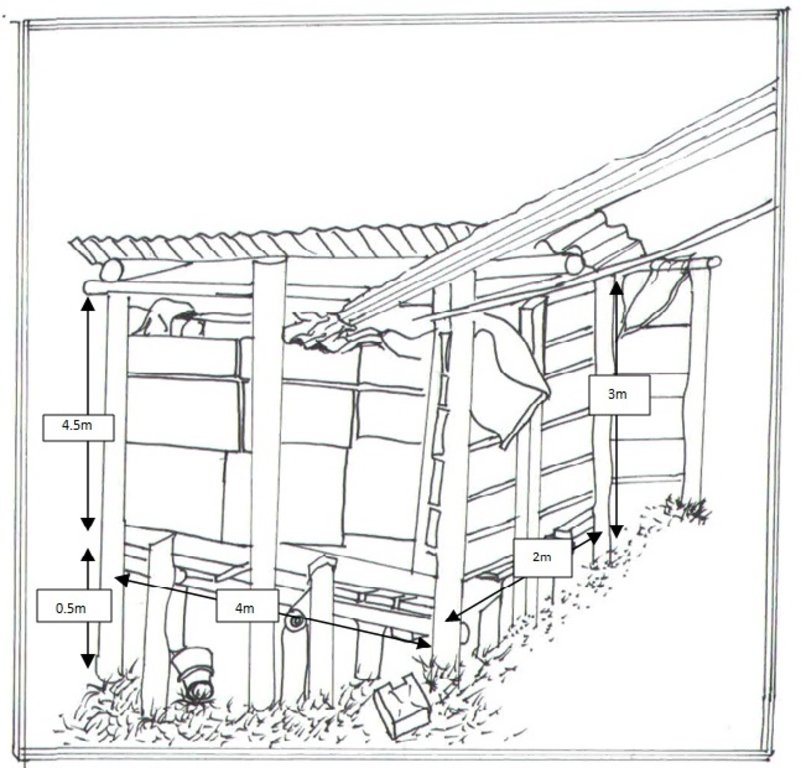Wooden water reservoir for rain water harvesting. [ยูกันดา]
- ผู้สร้างสรรค์:
- การอัพเดท:
- ผู้รวบรวม: Aine Amon
- ผู้เรียบเรียง: Kamugisha Rick Nelson
- ผู้ตรวจสอบ: Nicole Harari, Udo Höggel
Okutagila amizi aha ibati
technologies_3301 - ยูกันดา
ดูส่วนย่อย
ขยายทั้งหมด ย่อทั้งหมด1. ข้อมูลทั่วไป
1.2 รายละเอียดที่ติดต่อได้ของผู้รวบรวมและองค์กรที่เกี่ยวข้องในการประเมินและการจัดเตรียมทำเอกสารของเทคโนโลยี
วิทยากรหลัก
ผู้ใช้ที่ดิน:
Kabanda Deo
Mubende, Mubende Municipality
ยูกันดา
ชื่อของโครงการซึ่งอำนวยความสะดวกในการทำเอกสารหรือการประเมินเทคโนโลยี (ถ้าเกี่ยวข้อง)
Scaling-up SLM practices by smallholder farmers (IFAD)ชื่อขององค์กรซึ่งอำนวยความสะดวกในการทำเอกสารหรือการประเมินเทคโนโลยี (ถ้าเกี่ยวข้อง)
National Agricultural Research Organisation (NARO) - ยูกันดา1.3 เงื่อนไขการใช้ข้อมูลที่ได้บันทึกผ่านทาง WOCAT
วันที่เก็บรวบรวมข้อมูล(ภาคสนาม) :
13/11/2017
ผู้รวบรวมและวิทยากรหลักยอมรับเงื่อนไขเกี่ยวกับการใช้ข้อมูลที่ถูกบันทึกผ่านทาง WOCAT:
ใช่
1.4 การเปิดเผยเรื่องความยั่งยืนของเทคโนโลยีที่ได้อธิบายไว้
เทคโนโลยีที่ได้อธิบายไว้นี้เป็นปัญหาของความเสื่อมโทรมโทรมของที่ดินหรือไม่ จึงไม่ได้รับการยอมรับว่าเป็นเทคโนโลยีเพื่อการจัดการที่ดินอย่างยั่งยืน:
ไม่ใช่
แสดงความคิดเห็น:
The reservoir is established out of natural and local materials available to community members and stores relatively clean/safe water for future use.
1.5 อ้างอิงไปที่แบบสอบถามเรื่องแนวทาง SLM

water harvesting [เคนยา]
Water harvesting for agricultural production in ASALS.
- ผู้รวบรวม: Philippe Zahner
2. การอธิบายลักษณะของเทคโนโลยี SLM
2.1 การอธิบายแบบสั้น ๆ ของเทคโนโลยี
คำจำกัดความของเทคโนโลยี:
A gutter system constructed on the farmer’s house-roof collects rainwater and directs it into a constructed reservoir raised off the ground with interior walls lined with water-proof tarpaulin. The reservoir has a maximum capacity of 8,000 liters of water; clean enough for irrigation, livestock and domestic use during seasons of scarcity. The reservoir is raised off of ground to minimize contamination and any possible accidents.
2.2 การอธิบายแบบละเอียดของเทคโนโลยี
คำอธิบาย:
The wooden water reservoir system was introduced to the farmer by staff of the area's local government as a demonstration site to educate others on how to cheaply harvest and store rainwater in a relatively clean form for domestic, livestock and irrigation use. The farmer’s house was fitted with gutters to tap rainwater and direct it into the water reservoir. The water collected is used to buffer the water scarcity during the dry season, which normally stresses livestock and crops in the area. The water can be stored for as long as three months, depending on the size of the water reservoir and the use of the water.
The establishment of the technology requires a clean roof for collecting rainwater, gutters, poles, iron sheets, tarpaulin, hose pipe, jerry can and nails. Further equipment required include; a hammer, hoe and panga (large knife for weeding and forest works). At the farm in Kyegegwa, the reservoir is constructed 3 meters away from the farmer’s main house located at the top of a gently sloping hill. The establishment process involves: leveling of the site on which the technology is planned and constructing a water reservoir supported by a wooden structure. The support structure is constructed using four poles made in such a way that the two front poles are taller (5m) while the two poles behind are shorter (3m). This will give the roof a slight slope to prevent rainwater from stagnating on the roof. A raised rectangular floor supported by the poles is then established at a height of 0.5m above ground. The rectangular reservoir base dimensions are 1m×4m×2m (h×l×w) and is divided into 4 compartment. Each of these, lined with water-tight tarpaulin, can hold 2000 litres of water. The water so collected in the reservoir can be extracted under gravity through a 1.5cm diameter hose pipe into a jerry can placed below the reservoir.
The cost of establishment and durability of this rainwater harvesting system is mainly dependent on the type of materials and gutters used. In Kyegegwa District, wood for construction of the system is locally available valued at US$ 67.99 for the construction of the reservoir system. The iron sheets, gutters and nails are acquired from Kyegegwa Town where they are valued at US$ 127.28. The labor required is also locally available where it takes four men to establish the structure at a total cost of US$ 17.95 in three days.
The water reservoir is semi-permanent and can last for about 1.5 years depending on the quality of materials used. The maintenance activities include cleaning of the reservoir every month and repairing of the worn out parts at the end of the wet season. The farmer strongly recommends the technology since most of the materials and labour used are relatively cheap and locally available. The reservoir is raised off the ground to reduce contamination and minimize possible accidents with children and livestock. Despite the open space above the water level and the roof, the farmer has observed that the reservoir does not breed obnoxious vectors like mosquitoes. The water collected is relatively clean and the farmer uses it for irrigation of home gardens and for watering of livestock. When properly filtered it is as well used for domestic purposes. The technology can be improved by using treated poles, stronger wood material and tarpaulin of improved quality.
2.3 รูปภาพของเทคโนโลยี
คำอธิบายภาพ:
The black and white view shows the water system including the house roof, improvised iron sheet gutters and water reservoir structure. The colored picture shows a hose pipe connected into the reservoir to deliver water into the plastic tank by forces of gravity
2.4 วีดีโอของเทคโนโลยี
วันที่:
13/11/2017
สถานที่:
Kyeggegwa Town Council
ชื่อผู้ถ่ายวีดีโอ:
Amon Aine
2.5 ประเทศภูมิภาค หรือสถานที่ตั้งที่เทคโนโลยีได้นำไปใช้และได้รับการครอบคลุมโดยการประเมินนี้
ประเทศ:
ยูกันดา
ภูมิภาค/รัฐ/จังหวัด:
Western
ข้อมูลจำเพาะเพิ่มเติมของสถานที่ตั้ง :
Kyeggegwa
แสดงความคิดเห็น:
The project is located at the top of a gently sloping hill
Map
×2.6 วันที่การดำเนินการ
ระบุปีที่ใช้:
2015
2.7 คำแนะนำของเทคโนโลยี
ให้ระบุว่าเทคโนโลยีถูกแนะนำเข้ามาอย่างไร:
- ทางโครงการหรือจากภายนอก
ความคิดเห็น (ประเภทของโครงการ เป็นต้น) :
Local Government project to help local farmers adopting water storage systems for use during drought.
3. การจัดประเภทของเทคโนโลยี SLM
3.1 วัตถุประสงค์หลักของเทคโนโลยี
- ปรับปรุงการผลิตให้ดีขึ้น
- ลดความเสี่ยงของภัยพิบัติ
- ปรับตัวเข้ากับการเปลี่ยนแปลงภูมิอากาศของโลก สภาพภูมิอากาศที่รุนแรงและผลกระทบ
- สร้างผลกระทบทางด้านเศรษฐกิจที่เป็นประโยชน์
3.2 ประเภทของการใช้ที่ดินในปัจจุบันที่ได้นำเทคโนโลยีไปใช้

การตั้งถิ่นฐาน โครงสร้างพื้นฐาน
- การตั้งถิ่นฐาน ตึกอาคาร
ข้อสังเกต:
The farmer's house roof top is used as the rain water catchment area.
3.3 ข้อมูลเพิ่มเติมเกี่ยวกับการใช้ที่ดิน
การใช้น้ำของที่ดินที่มีการใช้เทคโนโลยีอยู่:
- น้ำฝนร่วมกับการชลประทาน
จำนวนของฤดูเพาะปลูกต่อปี:
- 2
ระบุ:
March-May and Sept-Nov. However, due to climate change, the seasons vary significantly in length and amount of rain recieved.
3.4 กลุ่ม SLM ที่ตรงกับเทคโนโลยีนี้
- การเก็บเกี่ยวน้ำ
3.5 กระจายตัวของเทคโนโลยี
ระบุการกระจายตัวของเทคโนโลยี:
- ใช้ ณ จุดที่เฉพาะเจาะจงหรือเน้นไปยังบริเวณพื้นที่ขนาดเล็ก
3.6 มาตรการ SLM ที่ประกอบกันเป็นเทคโนโลยี

มาตรการอนุรักษ์ด้วยโครงสร้าง
- S6: กำแพง สิ่งกีดขวาง รั้วไม้ รั้วต่างๆ
- S7: การกักเก็บน้ำ/การส่งลำเลียง/อุปกรณ์การชลประทาน
3.7 รูปแบบหลักของการเสื่อมโทรมของที่ดินที่ได้รับการแก้ไขโดยเทคโนโลยี

การเสื่อมโทรมของน้ำ
- Ha (Aridification): การเกิดความแห้งแล้ง
แสดงความคิดเห็น:
To provide safe water for domestic, livestock and irrigation use especially during the drought period.
3.8 การป้องกัน การลดลง หรือการฟื้นฟูความเสื่อมโทรมของที่ดิน
ระบุเป้าหมายของเทคโนโลยีกับความเสื่อมโทรมของที่ดิน:
- ป้องกันความเสื่อมโทรมของที่ดิน
- ปรับตัวกับสภาพความเสื่อมโทรมของที่ดิน
แสดงความคิดเห็น:
Harvesting rain water reduces the need for constructing dams.
4. ข้อมูลจำเพาะด้านเทคนิค กิจกรรมการนำไปปฏิบัติใช้ ปัจจัยนำเข้า และค่าใช้จ่าย
4.1 แบบแปลนทางเทคนิคของเทคโนโลยี
4.2 ข้อมูลจำเพาะด้านเทคนิคและการอธิบายแบบแปลนทางเทคนิค
The support structure is constructed using four poles made in such a way that the two front poles are taller (5 m) while the two poles behind are shorter (3 m), giving the roof a slight slope to prevent rainwater from stagnating on the roof. A raised rectangular floor supported by the poles is then established at a height of 0.5 m above ground. A cuboid reservoir of dimensions 1 m×4 m×2 m (h×l×w) is constructed with wooden panels; divided into four compartments and placed on the rectangular floor. Each compartment, to hold 2,000 liter of water, is lined with water-tight tarpaulin. Water from the reservoir can be extracted under gravity through a 1.5 cm diameter hose pipe into a jerry can placed below the reservoir.
4.3 ข้อมูลทั่วไปเกี่ยวกับการคำนวณปัจจัยนำเข้าและค่าใช้จ่าย
ให้ระบุว่าค่าใช้จ่ายและปัจจัยนำเข้าได้รับการคำนวณอย่างไร:
- ต่อหน่วยเทคโนโลยี
โปรดระบุหน่วย:
Water Reservior
ระบุปริมาตร ความยาว เป็นต้น (ถ้าเกี่ยวข้อง):
Capacity 8000 liters, segregated into 4 compartments
อื่นๆ หรือสกุลเงินประจำชาติ (ระบุ):
Uganda shillings
ระบุอัตราแลกเปลี่ยนจากดอลลาร์สหรัฐเป็นสกุลเงินท้องถิ่น (ถ้าเกี่ยวข้อง) คือ 1 เหรียญสหรัฐ =:
3638.35
ระบุค่าเฉลี่ยของค่าจ้างในการจ้างแรงงานต่อวัน:
20000
4.4 กิจกรรมเพื่อการจัดตั้ง
| กิจกรรม | ประเภทของมาตรการ | ช่วงเวลาดำเนินการ | |
|---|---|---|---|
| 1. | Site selection | ด้วยโครงสร้าง | Before onset of rain |
| 2. | Clearing and leveling | ด้วยโครงสร้าง | Before onset of rain |
| 3. | Erection of poles | ด้วยโครงสร้าง | Before onset of rain |
| 4. | Establishment of floor, walls and roofing | ด้วยโครงสร้าง | Before onset of rain |
| 5. | Establishment of taupline and gutters | ด้วยโครงสร้าง | Before onset of rain |
4.5 ค่าใช้จ่ายของปัจจัยนำเข้าที่จำเป็นสำหรับการจัดตั้ง
| ปัจจัยนำเข้า | หน่วย | ปริมาณ | ค่าใช้จ่ายต่อหน่วย | ค่าใช้จ่ายทั้งหมดต่อปัจจัยนำเข้า | %ของค่าใช้จ่ายที่ก่อให้เกิดขึ้นโดยผู้ใช้ที่ดิน | |
|---|---|---|---|---|---|---|
| แรงงาน | Builders | Man day | 8.0 | 22500.0 | 180000.0 | 100.0 |
| อุปกรณ์ | Hammer | pieces | 30000.0 | 1.0 | 30000.0 | 100.0 |
| อุปกรณ์ | Panga | pieces | 9000.0 | 1.0 | 9000.0 | 100.0 |
| อุปกรณ์ | Dibber | pieces | 15000.0 | 1.0 | 15000.0 | 100.0 |
| อุปกรณ์ | Hoe | pieces | 10000.0 | 1.0 | 10000.0 | 100.0 |
| วัสดุด้านพืช | Spade | pieces | 15000.0 | |||
| วัสดุด้านพืช | Poles | pieces | 12.0 | 3000.0 | 36000.0 | 100.0 |
| วัสดุด้านพืช | Timber | pieces | 12.0 | 10000.0 | 120000.0 | 100.0 |
| วัสดุด้านพืช | Wood | pieces | 8.0 | 1500.0 | 12000.0 | 100.0 |
| วัสดุสำหรับก่อสร้าง | Tarpaulin | peices | 1.0 | 45000.0 | 45000.0 | |
| วัสดุสำหรับก่อสร้าง | Iron sheet | peices | 6.0 | 25000.0 | 150000.0 | |
| วัสดุสำหรับก่อสร้าง | Nails | Kg | 4.0 | 6000.0 | 24000.0 | |
| วัสดุสำหรับก่อสร้าง | Hose pipe | Meters | 3.0 | 3000.0 | 9000.0 | |
| วัสดุสำหรับก่อสร้าง | Wood and poles | Pieces | 50.0 | 4900.0 | 245000.0 | |
| ค่าใช้จ่ายทั้งหมดของการจัดตั้งเทคโนโลยี | 885000.0 | |||||
ถ้าผู้ใช้ที่ดินรับภาระน้อยกว่า 100% ของค่าใช้จ่าย ให้ระบุว่าใครเป็นผู้รับผิดชอบส่วนที่เหลือ:
Kyegegwa District Local Government Community Development Fund.
แสดงความคิดเห็น:
The poles and wood are from the farmer's forest. The labor used was also family labor.
4.6 การบำรุงรักษาสภาพหรือกิจกรรมที่เกิดขึ้นเป็นประจำ
| กิจกรรม | ประเภทของมาตรการ | ช่วงระยะเวลา/ความถี่ | |
|---|---|---|---|
| 1. | Cleaning the reservoir/ tarpaulin and unblocking gutters | ด้วยการจัดการ | Twice in the wet season |
| 2. | Renovation of the structure | ด้วยโครงสร้าง | Once a year |
| 3. | Replacement of the taupline | ด้วยโครงสร้าง | Once a year |
4.7 ค่าใช้จ่ายของปัจจัยนำเข้าและกิจกรรมที่เกิดขึ้นเป็นประจำที่ต้องการการบำรุงรักษา (ต่อปี)
| ปัจจัยนำเข้า | หน่วย | ปริมาณ | ค่าใช้จ่ายต่อหน่วย | ค่าใช้จ่ายทั้งหมดต่อปัจจัยนำเข้า | %ของค่าใช้จ่ายที่ก่อให้เกิดขึ้นโดยผู้ใช้ที่ดิน | |
|---|---|---|---|---|---|---|
| แรงงาน | Men | 2.0 | 20000.0 | 40000.0 | 100.0 | |
| อุปกรณ์ | Hose pipe | meters | 3.0 | 2000.0 | 6000.0 | 100.0 |
| อุปกรณ์ | Jerrycans | 20litres | 2.0 | 9000.0 | 18000.0 | 100.0 |
| วัสดุสำหรับก่อสร้าง | Poles | pieces | 6.0 | 3000.0 | 18000.0 | 100.0 |
| วัสดุสำหรับก่อสร้าง | Timber | pieces | 6.0 | 10000.0 | 60000.0 | 100.0 |
| วัสดุสำหรับก่อสร้าง | Wood | pieces | 5.0 | 1500.0 | 7500.0 | 100.0 |
| ค่าใช้จ่ายทั้งหมดของการบำรุงรักษาสภาพเทคโนโลยี | 149500.0 | |||||
ถ้าผู้ใช้ที่ดินรับภาระน้อยกว่า 100% ของค่าใช้จ่าย ให้ระบุว่าใครเป็นผู้รับผิดชอบส่วนที่เหลือ:
Kyegegwa District Local Government
4.8 ปัจจัยสำคัญที่สุดที่มีผลกระทบต่อค่าใช้จ่าย
ปัจจัยสำคัญที่สุดที่มีผลกระทบต่อค่าใช้จ่ายต่างๆ:
The nature of material used for example wood or metal and the labor hired to construct the system.
5. สิ่งแวดล้อมทางธรรมชาติและของมนุษย์
5.1 ภูมิอากาศ
ฝนประจำปี
- < 250 ม.ม.
- 251-500 ม.ม.
- 501-750 ม.ม.
- 751-1,000 ม.ม.
- 1,001-1,500 ม.ม.
- 1,501-2,000 ม.ม.
- 2,001-3,000 ม.ม.
- 3,001-4,000 ม.ม.
- > 4,000 ม.ม.
ข้อมูลจำเพาะ/ความคิดเห็นเรื่องปริมาณน้ำฝน:
The rain seasons run from March-May and Sept-Nov.
เขตภูมิอากาศเกษตร
- ชื้น
5.2 สภาพภูมิประเทศ
ค่าเฉลี่ยความลาดชัน:
- ราบเรียบ (0-2%)
- ลาดที่ไม่ชัน (3-5%)
- ปานกลาง (6-10%)
- เป็นลูกคลื่น (11-15%)
- เป็นเนิน (16-30%)
- ชัน (31-60%)
- ชันมาก (>60%)
ธรณีสัณฐาน:
- ที่ราบสูง/ที่ราบ
- สันเขา
- ไหล่เขา
- ไหล่เนินเขา
- ตีนเนิน
- หุบเขา
ระดับความสูง:
- 0-100 เมตร
- 101-500 เมตร
- 501-1,000 เมตร
- 1,001-1,500 เมตร
- 1,501-2,000 เมตร
- 2,001-2,500 เมตร
- 2,501-3,000 เมตร
- 3,001-4,000 เมตร
- > 4,000 เมตร
ให้ระบุถ้าเทคโนโลยีได้ถูกนำไปใช้:
- ไม่เกี่ยวข้อง
5.3 ดิน
ค่าเฉลี่ยความลึกของดิน:
- ตื้นมาก (0-20 ซ.ม.)
- ตื้น (21-50 ซ.ม.)
- ลึกปานกลาง (51-80 ซ.ม.)
- ลึก (81-120 ซ.ม.)
- ลึกมาก (>120 ซ.ม.)
เนื้อดิน (ดินชั้นบน):
- ปานกลาง (ดินร่วน ทรายแป้ง)
เนื้อดินล่าง (> 20 ซ.ม.ต่ำจากผิวดิน):
- ปานกลาง (ดินร่วน ทรายแป้ง)
อินทรียวัตถุในดิน:
- ปานกลาง (1-3%)
5.4 ความเป็นประโยชน์และคุณภาพของน้ำ
ระดับน้ำใต้ดิน:
> 50 เมตร
น้ำไหลบ่าที่ผิวดิน:
ปานกลาง
คุณภาพน้ำ (ที่ยังไม่ได้บำบัด):
เป็นน้ำเพื่อการดื่มที่ไม่ดี (จำเป็นต้องได้รับการบำบัด)
ความเค็มของน้ำเป็นปัญหาหรือไม่:
ไม่ใช่
กำลังเกิดน้ำท่วมในพื้นที่หรือไม่:
ไม่ใช่
5.5 ความหลากหลายทางชีวภาพ
ความหลากหลายทางชนิดพันธุ์:
- ปานกลาง
ความหลากหลายของแหล่งที่อยู่:
- ปานกลาง
5.6 ลักษณะของผู้ใช้ที่ดินที่นำเทคโนโลยีไปปฏิบัติใช้
อยู่กับที่หรือเร่ร่อน:
- อยู่กับที่
แนวทางการตลาดของระบบการผลิต:
- เพื่อการยังชีพ (หาเลี้ยงตนเอง)
รายได้ที่มาจากนอกฟาร์ม:
- 10-50% ของรายได้ทั้งหมด
ระดับของความมั่งคั่งโดยเปรียบเทียบ:
- พอมีพอกิน
เป็นรายบุคคล/ครัวเรือน:
- เป็นรายบุคคล/ครัวเรือน
ระดับของการใช้เครื่องจักรกล:
- งานที่ใช้แรงกาย
เพศ:
- ชาย
อายุของผู้ใช้ที่ดิน:
- ผู้สูงอายุ
5.7 พื้นที่เฉลี่ยของที่ดินที่เป็นเจ้าของหรือเช่าโดยผู้ใช้ที่ดินที่นำเทคโนโลยีไปปฏิบัติใช้
- < 0.5 เฮกตาร์
- 0.5-1 เฮกตาร์
- 1-2 เฮกตาร์
- 2-5 เฮกตาร์
- 5-15 เฮกตาร์
- 15-50 เฮกตาร์
- 50-100 เฮกตาร์
- 100-500 เฮกตาร์
- 500-1,000 เฮกตาร์
- 1,000-10,000 เฮกตาร์
- >10,000 เฮกตาร์
พิจารณาว่าเป็นขนาดเล็ก กลาง หรือขนาดใหญ่ (ซึ่งอ้างอิงถึงบริบทระดับท้องถิ่น):
- ขนาดกลาง
5.8 กรรมสิทธิ์ในที่ดิน สิทธิในการใช้ที่ดินและสิทธิในการใช้น้ำ
กรรมสิทธิ์ในที่ดิน:
- รายบุคคล ได้รับสิทธิครอบครอง
สิทธิในการใช้ที่ดิน:
- รายบุคคล
สิทธิในการใช้น้ำ:
- เกี่ยวกับชุมชน (ถูกจัดระเบียบ)
- รายบุคคล
5.9 การเข้าถึงบริการและโครงสร้างพื้นฐาน
สุขภาพ:
- จน
- ปานกลาง
- ดี
การศึกษา:
- จน
- ปานกลาง
- ดี
ความช่วยเหลือทางด้านเทคนิค:
- จน
- ปานกลาง
- ดี
การจ้างงาน (เช่น ภายนอกฟาร์ม):
- จน
- ปานกลาง
- ดี
ตลาด:
- จน
- ปานกลาง
- ดี
พลังงาน:
- จน
- ปานกลาง
- ดี
ถนนและการขนส่ง:
- จน
- ปานกลาง
- ดี
น้ำดื่มและการสุขาภิบาล:
- จน
- ปานกลาง
- ดี
บริการด้านการเงิน:
- จน
- ปานกลาง
- ดี
6. ผลกระทบและสรุปคำบอกกล่าว
6.1 ผลกระทบในพื้นที่ดำเนินการ (On-site) จากการใช้เทคโนโลยี
ผลกระทบทางด้านเศรษฐกิจและสังคม
การผลิต
การผลิตพืชผล
คุณภาพพืชผล
การผลิตพืชที่ใช้เลี้ยงปศุสัตว์
คุณภาพพืชที่ใช้เลี้ยงปศุสัตว์
การผลิตสัตว์
การผลิตไม้
คุณภาพป่า /พื้นที่ทำไม้
การผลิตของจากป่าทุกชนิดยกเว้นไม้
การเสี่ยงต่อความล้มเหลวในการผลิต
ความหลากหลายของผลิตภัณฑ์
พื้นที่สำหรับการผลิต
การจัดการที่ดิน
ความเป็นประโยชน์และคุณภาพของน้ำ
การมีน้ำดื่มไว้ให้ใช้
หลังจาก SLM:
80000 litres in storage by end of the wet season
คุณภาพน้ำดื่ม
แสดงความคิดเห็น/ระบุ:
The water stored in the tank is relatively clean compared to that harvested previously using the run off harvest system.
การมีน้ำไว้ให้ปศุสัตว์
คุณภาพน้ำสำหรับปศุสัตว์
การมีน้ำไว้ให้สำหรับการชลประทาน
คุณภาพน้ำสำหรับการชลประทาน
รายได้และค่าใช้จ่าย
ค่าใช่จ่ายของปัจจัยการผลิตทางการเกษตร
แสดงความคิดเห็น/ระบุ:
Costs on irrigation and income from extended growing seasons
รายได้จากฟาร์ม
ความหลากหลายของแหล่งผลิตรายได้
ความเหลื่อมล้ำทางเศรษฐกิจ
ภาระงาน
ผลกระทบด้านสังคมวัฒนธรรมอื่น ๆ
ความมั่นคงด้านอาหาร / พึ่งตนเองได้
สถานการณ์ด้านสุขภาพ
แสดงความคิดเห็น/ระบุ:
Improved nutrition since the irrigation water supports growth of vegetables
โอกาสทางวัฒนธรรม
โอกาสทางด้านสันทนาการ
สถาบันของชุมชน
ผลกระทบด้านนิเวศวิทยา
วัฐจักรน้ำหรือน้ำบ่า
การเก็บเกี่ยวหรือการกักเก็บน้ำ
น้ำไหลบ่าที่ผิวดิน
การระบายน้ำส่วนเกิน
ดิน
ความชื้นในดิน
แสดงความคิดเห็น/ระบุ:
Through irrigation in the dry season
การหมุนเวียนและการเติมของธาตุอาหาร
แสดงความคิดเห็น/ระบุ:
The water facilitates dissolution of nutrients
อินทรียวัตถุในดิน/ต่ำกว่าดินชั้น C
ความเป็นกรด
ความหลากหลายทางชีวภาพของพืชและสัตว์
การปกคลุมด้วยพืช
มวลชีวภาพ/เหนือดินชั้น C
ความหลากหลายทางชีวภาพของพืช
พืชพันธุ์ต่างถิ่นที่รุกล้ำเข้ามา
ความหลากหลายทางชีวภาพของสัตว์
ลดความเสี่ยงของภัยพิบัติ
ผลกระทบจากภัยแล้ง
6.2 ผลกระทบนอกพื้นที่ดำเนินการ (Off-site) จากการใช้เทคโนโลยี
น้ำที่ใช้ประโยชน์ได้
ความสามารถต้านทานการเปลี่ยนแปลง / ความสามารถในการคัดกรอง
6.3 การเผชิญและความตอบสนองของเทคโนโลยีต่อการเปลี่ยนแปลงสภาพภูมิอากาศที่ค่อยเป็นค่อยไป และสภาพรุนแรงของภูมิอากาศ / ภัยพิบัติ (ที่รับรู้ได้โดยผู้ใช้ที่ดิน)
สภาพรุนแรงของภูมิอากาศ (ภัยพิบัติ)
ภัยพิบัติจากสภาพภูมิอากาศ
| เทคโนโลยีมีวิธีการรับมืออย่างไร | |
|---|---|
| ภัยจากฝนแล้ง | ดี |
ผลลัพธ์ตามมาที่เกี่ยวข้องกับภูมิอากาศอื่น ๆ
ผลลัพธ์ตามมาที่เกี่ยวข้องกับภูมิอากาศอื่น ๆ
| เทคโนโลยีมีวิธีการรับมืออย่างไร | |
|---|---|
| ช่วงการปลูกพืชที่ขยายออกไป | ดี |
| Livestock and domestic water | ดี |
6.4 การวิเคราะห์ค่าใช้จ่ายและผลประโยชน์ที่ได้รับ
ผลประโยชน์ที่ได้รับเปรียบเทียบกับค่าใช้จ่ายในการจัดตั้งเป็นอย่างไร (จากมุมมองของผู้ใช้ที่ดิน)
ผลตอบแทนระยะสั้น:
ด้านบวก
ผลตอบแทนระยะยาว:
ด้านบวก
ผลประโยชน์ที่ได้รับเปรียบเทียบกับค่าใช้จ่ายในการบำรุงรักษาหรือต้นทุนที่เกิดขึ้นซ้ำอีก เป็นอย่างไร (จากมุมมองของผู้ใช้ที่ดิน)
ผลตอบแทนระยะสั้น:
ด้านบวกอย่างมาก
ผลตอบแทนระยะยาว:
ด้านบวกอย่างมาก
6.5 การปรับตัวของเทคโนโลยี
- 1-10%
จากทั้งหมดที่ได้รับเทคโนโลยีเข้ามามีจำนวนเท่าใดที่ทำแบบทันที โดยไม่ได้รับการจูงใจด้านวัสดุหรือการเงินใด ๆ:
- 50-90%
6.6 การปรับตัว
เทคโนโลยีได้รับการปรับเปลี่ยนเมื่อเร็วๆนี้ เพื่อให้ปรับตัวเข้ากับสภาพที่กำลังเปลี่ยนแปลงหรือไม่:
ใช่
อื่น ๆ (ระบุ):
Limited finances
ให้ระบุการปรับตัวของเทคโนโลยี (การออกแบบ วัสดุหรือชนิดพันธุ์ เป็นต้น):
The farmer improvised iron sheets as gutters to collect water from the roof into the reservoir.
6.7 จุดแข็ง / ข้อได้เปรียบ / โอกาสของเทคโนโลยี
| จุดแข็ง / ข้อได้เปรียบ / โอกาสในทัศนคติของผู้ใช้ที่ดิน |
|---|
| Most of the materials are cheap and locally available. |
| The establishment process is not so complex and can easily be learnt by the local workers. |
| The tarpaulin used is relatively cheap and long lasting. |
| จุดแข็ง / ข้อได้เปรียบ / โอกาสในทัศนคติของผู้รวบรวมหรือวิทยากรหลัก |
|---|
| The farmer easily benefits from 2 annual rainy seasons. |
| The system is raised off ground which minimizes contamination and accidents. |
| The water is kept in a relatively clean status for livestock, irrigation and domestic use. |
6.8 จุดอ่อน / ข้อเสียเปรียบ / ความเสี่ยงของเทคโนโลยีและวิธีการแก้ไข
| จุดอ่อน / ข้อเสียเปรียบ / ความเสี่ยงในทัศนคติของผู้ใช้ที่ดิน | มีวิธีการแก้ไขได้อย่างไร |
|---|---|
| The water system is open to contamination. | Need to construct a wall net to protect the water from contamination |
| The materials (wood) used are prone to destruction by insects which increases maintenance costs. | Use of metallic or concrete poles |
| จุดอ่อน / ข้อเสียเปรียบ / ความเสี่ยงในทัศนคติของผู้รวบรวมหรือวิทยากรหลัก | มีวิธีการแก้ไขได้อย่างไร |
|---|---|
| The taupline is a temporally reservoir that needs routine replacement. | Use of plastic materials or construction of concrete walls. |
| In case of infestation with insects like termites, the poles will suffer damage. | Use treated wood poles or metal poles. |
7. การอ้างอิงและการเชื่อมต่อ
7.1 วิธีการและแหล่งข้อมูล
- ไปเยี่ยมชมภาคสนาม การสำรวจพื้นที่ภาคสนาม
1
- การสัมภาษณ์กับผู้ใช้ที่ดิน
1
7.2 การอ้างอิงถึงสิ่งตีพิมพ์
หัวข้อ, ผู้เขียน, ปี, หมายเลข ISBN:
Rain Water Harvesting Handbook, Ministry of Water and Environment
ชื่อเรื่อง ผู้เขียน ปี ISBN:
https://www.mwe.go.ug/sites/default/files/library/Rain%20Water%20Harvesting%20Handbook.pdf
7.3 เชื่อมโยงกับข้อมูลที่มีอยู่บนออนไลน์
ชื่อเรื่องหรือคำอธิบาย:
Rainwater Reservoirs above Ground Structures for Roof Catchment
URL:
http://www.itacanet.org/doc-archive-eng/water/Rainwater_reservoirs_GTZ.pdf
ลิงก์และโมดูล
ขยายทั้งหมด ย่อทั้งหมดลิงก์

water harvesting [เคนยา]
Water harvesting for agricultural production in ASALS.
- ผู้รวบรวม: Philippe Zahner
โมดูล
ไม่มีโมดูล


